What to do with 1,000 years of history: Presenting the Conservation Plan for the Abbey of St Edmund at the Past, Present & Future conference
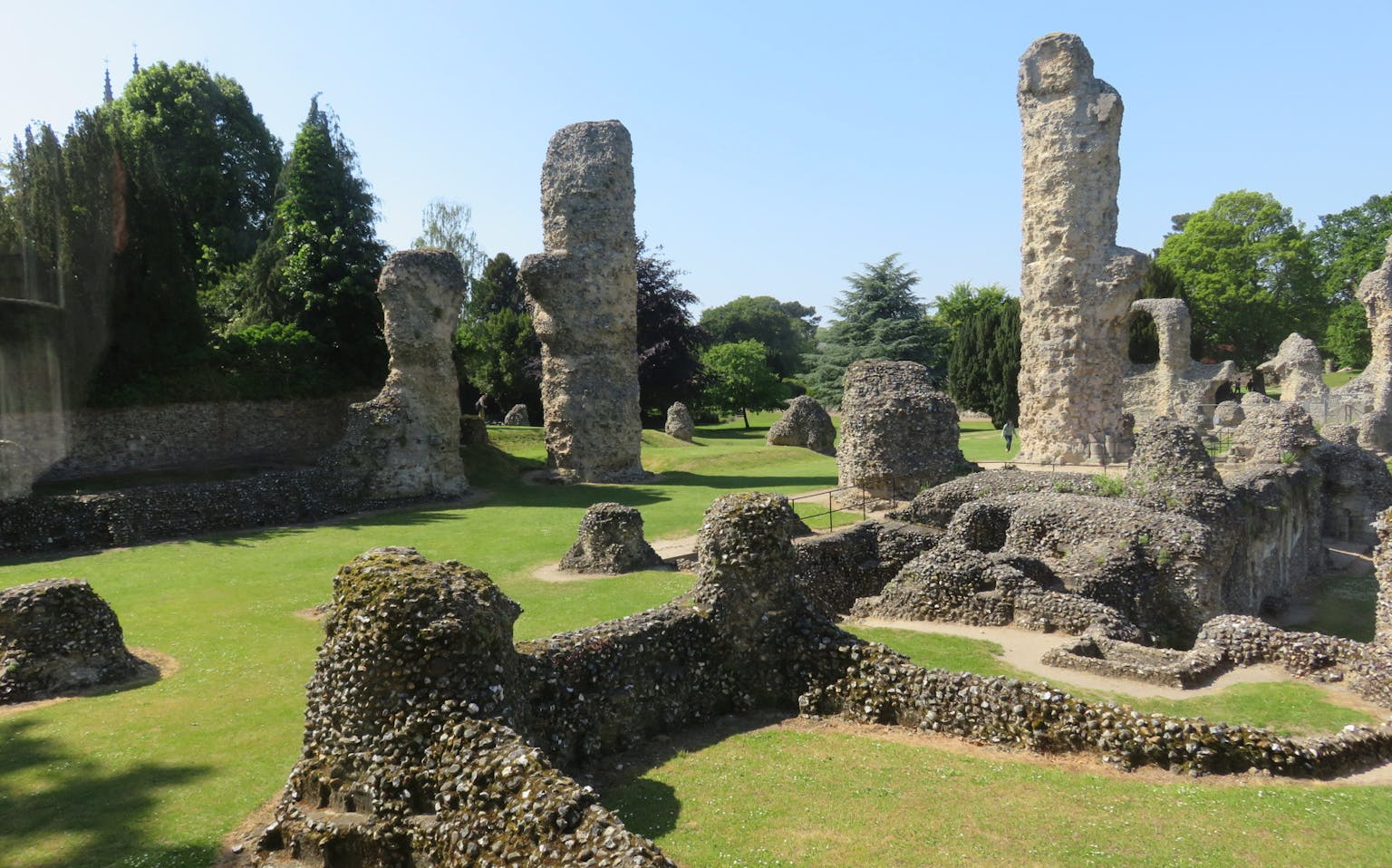
The many centuries of history woven into the complex site are visible in the highly significant and much valued place at the heart of the town of Bury St Edmunds in Suffolk. Purcell was commissioned to prepare a Conservation Plan for the whole site of the medieval precinct of the Abbey of St Edmund as well as its accompanying fishponds and meadows. This was a rare opportunity for a site in multiple ownership and use. The plan provides the foundation for a coordinated approach to the site’s future conservation and, moreover, the celebration of its extraordinary history.
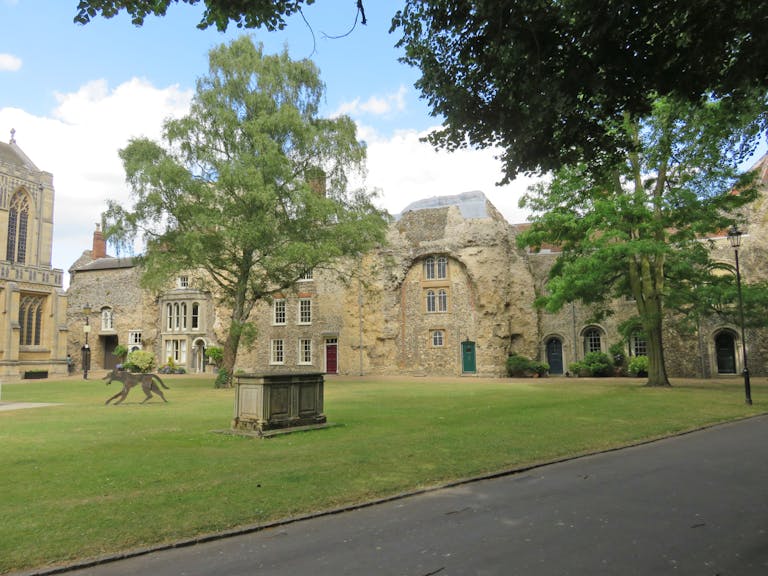
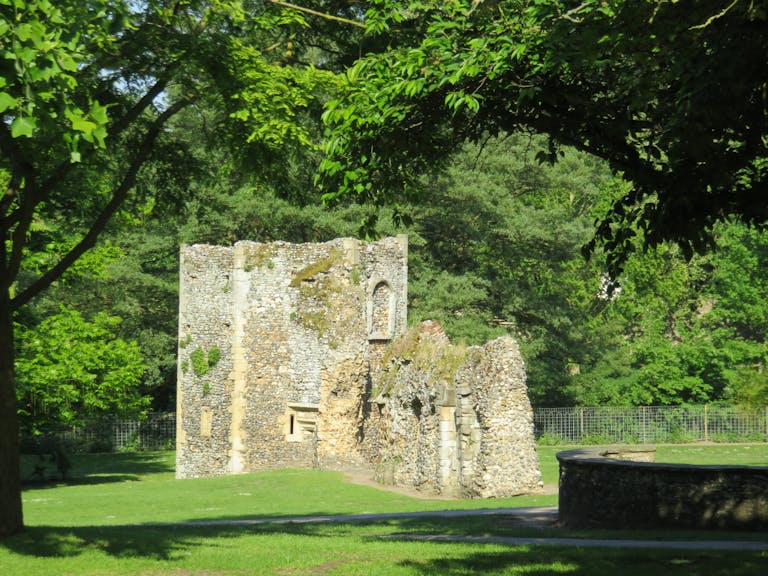
Historical Development of the Site
The Abbey of St Edmund began as a religious foundation possibly as early as the seventh century but it gained in status with the arrival of the body of martyred St Edmund in the tenth century. Endowed repeated by England’s kings, the Abbey expanded across part of the Saxon town and created its own grid of streets outside the Abbey precinct. The Abbey church is said to have been, by floor area, the largest church in western Europe, before the creation of St Peter's Basilica in Rome in 1506.
In 1539, the mighty Abbey was dissolved by Henry VIII and St Edmund’s body disappeared. The site was sold and broken up. The Abbot’s Palace was retained as a big house in large gardens until the construction of Abbey House in the eighteenth century. Two of the medieval churches survived as parish churches and, between, a very fine almshouse building was constructed in 1744 for the poor of both parishes. The ruined remains of the Abbey church’s west front were built up into a unique troglodytic terrace of houses.
In 1831, the Marquess of Bristol permitted the grounds of Abbey House to become a Botanic Garden, to which was later added a menagerie. In 1912 it became a free public park whilst in 1913 St James’s Church was designated the Cathedral of St Edmundsbury. The site now encompasses over 150 listed buildings, two scheduled monuments and a registered park.

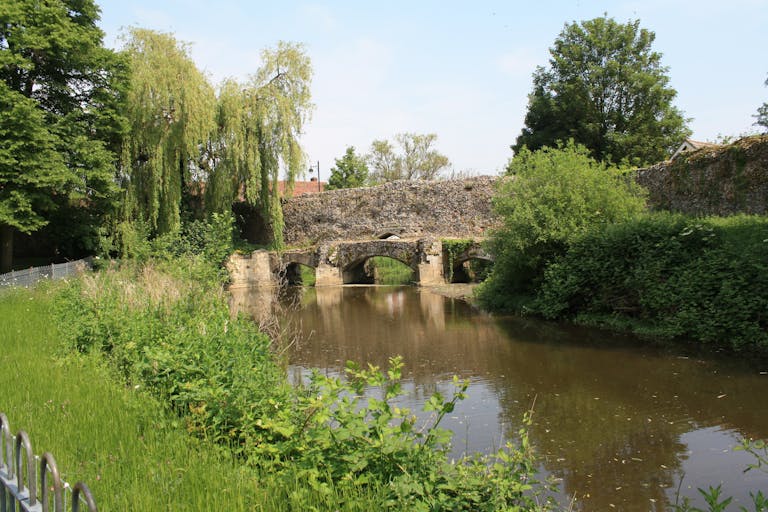
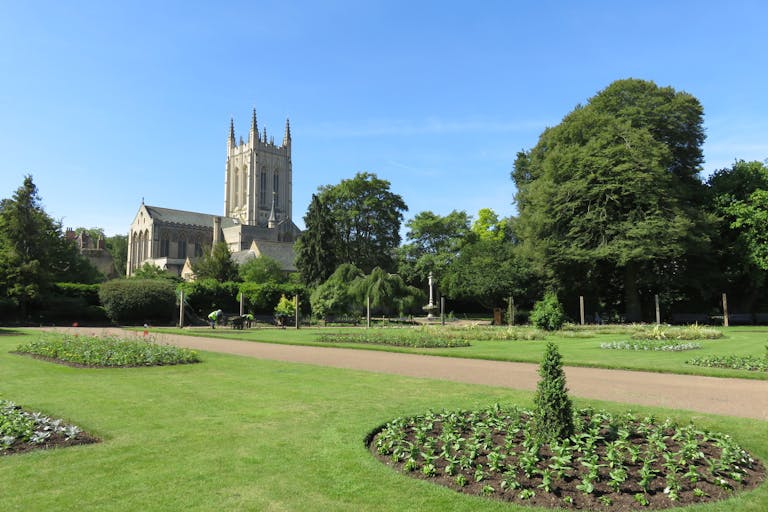
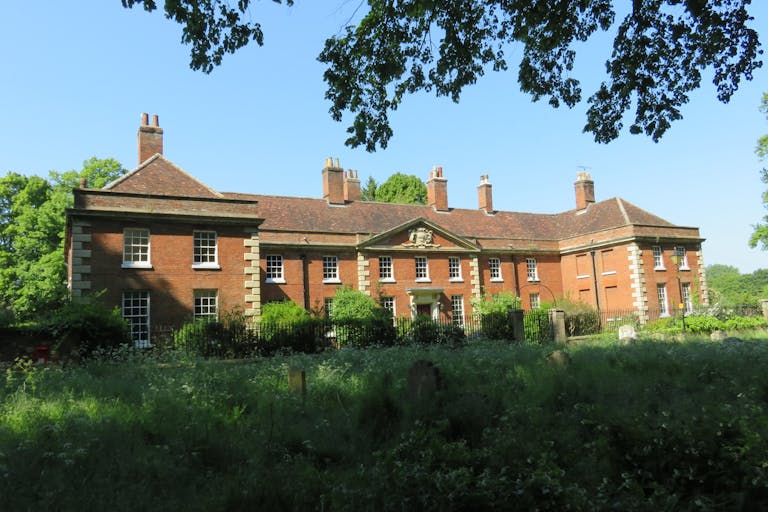
What makes the site so important?
The site is highly significant at international, national and local levels. The Abbey housed the shrine of St Edmund, England’s first patron saint and the focus of international pilgrimage until 1539. It was this role as a place of pilgrimage that made it an ideal location for the barons to convene in advance of presenting the Magna Carta to King John and thus makes the site arguably the place where the foundation of modern democracy was conceived.
Extraordinarily wealthy and influential, the Abbey of St Edmund shaped the layout as well as the history of the town of Bury St Edmunds. The surrender of the Abbey changed the town’s fortunes forever and the ruins remain a striking example of the intensity of destruction of the Dissolution.
Although the precinct was broken up, the subsequent five hundred years further enriched the site’s significance. With the town’s two fine medieval churches, it remained a focal point for religious worship and later the site of the diocesan Cathedral, with an extraordinary transformation of one of the medieval churches. Other themes repeat down the centuries: a place of education, a place of provision for the poor, a place of healing, a place of remembrance, all echoing the many functions of the Abbey. A place of leisure, the Botanic Garden evolved into the much loved park that now encompasses the ruins of the Abbey.
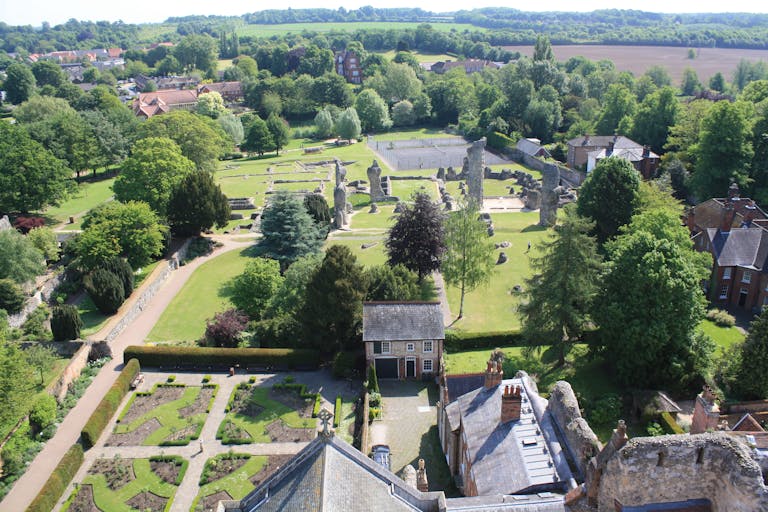
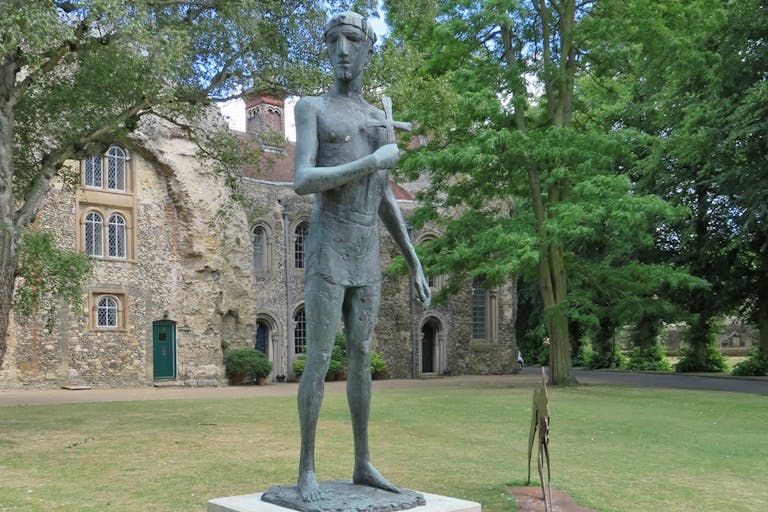
The Conservation Plan
Drawing on a previous historical and archaeological study, the Conservation Plan considered the relative ages and the different heritage contexts of the many built features and landscape areas of the site. This fed into a holistic assessment of the significance of the site, which was no small challenge.
Working closely with a range of stakeholders and those who work and care for different parts of the site, we identified the issues and opportunities facing the site. These included a maintenance backlog and limited connectivity across the site, as well as significant opportunities to improve the interpretation of the site for visitors and to enhance understanding of the site’s archaeology. A conservation philosophy and set of policies were developed that are applicable across the whole site.
The brief for the Conservation Plan also required that further analysis be undertaken, and recommendations be made to enable the local Heritage Partnership to plan a programme of works. Working closely with its Conservation Plan Advisory Group, we developed a series of detailed capacity for change plans, recommendations to address six key aims, a plan of key actions, a list of immediate activities for engaging with the local community, and a handy guide to navigating the complexities of the many heritage designations on the site.
The Conservation Plan was commissioned by the Abbey of St Edmund Heritage Partnership, which comprises of many key stakeholders including
St Edmundsbury’s Cathedral, St Edmundsbury Borough Council, English Heritage, Bury St Edmunds Town Council, St Mary’s Church, the Abbey Garden Friends and the Bury Water Meadows Group, alongside other local amenity groups, such as the Bury Society and Bury Town Trust, and experienced individuals, such as former county archaeologists.
The Conservation Plan was funded by grants from Historic England and St Edmundsbury Borough Council. These also paid for the preceding document assessing the existing historical and archaeological information about the site, a Heritage Assessment prepared by Richard Hoggett Heritage.
Rowenna Wood of Purcell and Richard Hoggett will be presenting their reports at a conference at the Cathedral on the 25th of January. The Abbey of St Edmund: Past, Present and Future will also include an open forum for community engagement with the project.
Download the Conservation Plan here.


